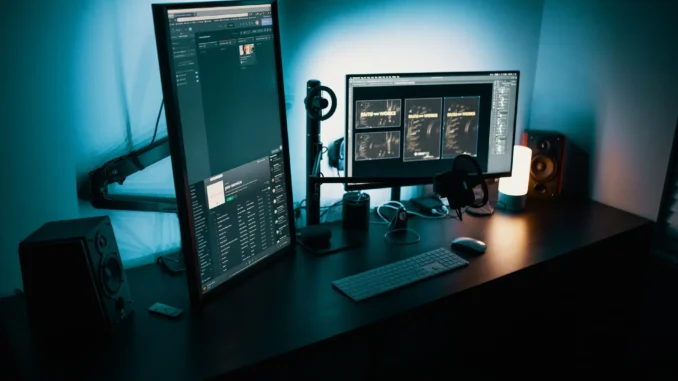
When it comes to buying a new computer, the array of options can be overwhelming. Whether you need a computer for work, gaming, creative projects, or everyday use, finding the perfect match requires careful consideration of your specific needs and preferences. In this guide, we will walk you through the essential factors to consider when choosing the right computer to ensure it meets your requirements and provides an optimal user experience.
Table of Contents
Purpose and Usage
The first step in finding the perfect computer is to determine its primary purpose and your typical usage. Are you a professional in need of a powerful workstation for video editing or 3D rendering? Or are you a student looking for a lightweight and portable laptop for note-taking and research? Identifying the primary use will narrow down your choices and help you focus on the right specifications.
Form Factor
Consider the form factor that best suits your lifestyle and usage patterns. Laptops provide portability, making them ideal for users who need to work on the go or switch between multiple locations. Desktop computers, on the other hand, offer more power and upgradeability, making them suitable for resource-intensive tasks or gaming. All-in-one computers combine the monitor and computer into one unit, saving space and providing a streamlined setup for tasks that don’t require extensive portability.
Processor (CPU) Performance
The processor is the brain of your computer, and its performance directly affects how well your system handles tasks. Intel and AMD are the main CPU manufacturers, offering a range of processors catering to different performance levels. For casual use like web browsing and office applications, a mid-range processor will suffice. However, for demanding tasks like gaming, video editing, or programming, a more powerful CPU with multiple cores and higher clock speeds is recommended.
RAM (Memory)
Random Access Memory (RAM) is crucial for multitasking and running applications smoothly. For most users, 8GB of RAM is sufficient for everyday tasks. However, if you use resource-intensive software or frequently work with large files, consider upgrading to 16GB or more for better performance.
Storage Options
The choice of storage is critical in determining the speed and responsiveness of your computer. Traditional Hard Disk Drives (HDDs) offer more storage at a lower cost but are slower compared to Solid State Drives (SSDs). SSDs are faster, more reliable, and significantly improve overall system performance. Consider an SSD as the primary storage for your operating system and frequently used applications, and if needed, complement it with an HDD for additional storage.
Graphics Performance
Graphics performance matters if you plan to use your computer for gaming, graphic design, or video editing. Integrated graphics, found in most laptops and budget systems, are sufficient for basic tasks but may struggle with graphically demanding applications. Dedicated graphics cards, such as those from NVIDIA or AMD, offer better performance and are essential for gamers and professionals who work with graphics-heavy software.
Operating System
Choose an operating system that aligns with your preferences and software compatibility. Windows is the most versatile and widely used operating system, offering extensive software support and gaming capabilities. MacOS is popular among creative professionals for its seamless integration with Apple’s ecosystem and robust multimedia tools. Linux is an open-source option preferred by programmers and tech enthusiasts for its customization and security features.
Budget Considerations
Set a budget based on your needs and priorities. While it’s tempting to go for the latest and most powerful components, ensure that you are investing in features that genuinely benefit your usage. Balance your budget to get the best value for money without overspending on features you won’t use frequently.
Do you prefer a laptop or a desktop computer?
Typically, a desktop computer (thus the name) rests on top of or directly beneath a desk. Like the one seen in the image below, it often comes in a tower size and is around 20x40x50cm (8x16x20 inches) in size.
The so-called PC-Case typically comes in black, grey, or white and may be customized with side doors, glass panels, and other features you may or may not require.
Mobility
Unfortunately, a laptop has certain cooling and power limitations because it is so much smaller than a desktop PC.
As a result, a laptop’s built-in components work less effectively since they must operate with less power and less effective cooling. Some laptops give speeds comparable to desktop PCs if mobility is crucial to you but you still require exceptional performance. However, these laptops are rather hefty and start to become loud very quickly.
Choosing the right computer is a significant decision that directly impacts your productivity and enjoyment. By considering factors such as purpose, form factor, processor performance, RAM, storage options, graphics capabilities, operating system, and budget, you can find the perfect match that meets your requirements and provides an optimal user experience. Whether it’s a powerful workstation for professional tasks or a portable laptop for everyday use, a well-informed decision will ensure you get the most out of your computer for years to come.

Leave a Reply